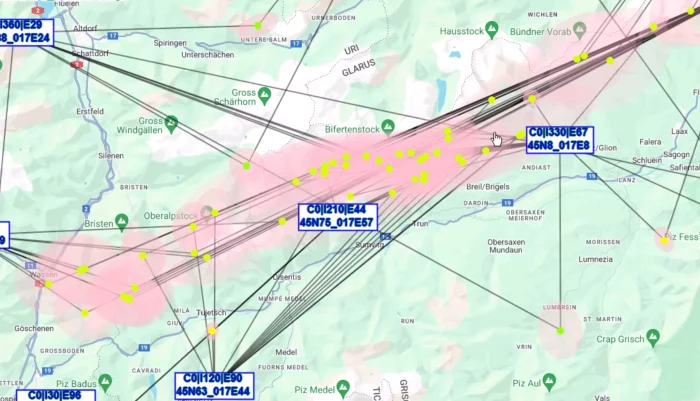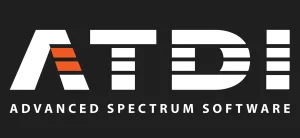Analyze Content


ATDI SOUTH PACIFIC PTY LTD
ATDI is a leading military network planning and Electronic Warfare simulation specialist. Our flagship radio propagation software, HTZ Warfare supports military units around the globe. This solution enables military units, defence and security agencies to design communication networks, minimise interference, automatically assign frequencies and generate alternative communication plans.
Macquarie Park, New South Wales, Australia
Defense & Security
Products & Services
People
News
About
Products & Services
ICS Monitoring SDRN Control
ATDI South Pacific Pty Ltd
ICS Monitoring is a flexible network monitoring solution that allows users to better understand the impact of interference on their network and others. It is compatible with leading hardware monitoring equipment suppliers and allows the user to work with different hardware suppliers simultaneously. ICS Monitoring manages a variety of measurement data and features an automatic post-processing function for real-time data streams. It forms part of our spectrum management solution and is fully compatible with ICS Manager.
ICS Monitoring can be used to assess spectrum use, monitor emissions and regulate the control of license emissions. It performs tasks in accordance with radio license regulations and verifies compliance with the frequency allocation conditions, frequency use and channel occupancy. ICS Monitoring can be used to generate interference case studies and search for unauthorised emissions.
ICS Monitoring can be used to assess spectrum use, monitor emissions and regulate the control of license emissions. It performs tasks in accordance with radio license regulations and verifies compliance with the frequency allocation conditions, frequency use and channel occupancy. ICS Monitoring can be used to generate interference case studies and search for unauthorised emissions.
HTZ Warfare
ATDI South Pacific Pty Ltd
The only RF simulation software, focused exclusively on military and defence communication networks. For Army, Air Force and Navy.
Covering all military communications from VHF/UHF, HF, ground to ground, ground to air comms, every wireless technology from kHz to THz.
Complete electronic warfare simulations through radar coverage, direction finder optimization, jamming coverage and efficiency, on the move jamming, CRPA drone jamming, counter drone/UAV network planning, flight path analysis, MANET networks, etc.
With HTZ Warfare, you can simulate any electronic warfare environment for tactical mission planning, offensive or defensive electromagnetic spectrum operations.
Boasting a massive library of almost 50 radio propagation models and global cartographic data for immediate, out-of-the-box RF simulations.
Powerful, comprehensive, and complete!
Covering all military communications from VHF/UHF, HF, ground to ground, ground to air comms, every wireless technology from kHz to THz.
Complete electronic warfare simulations through radar coverage, direction finder optimization, jamming coverage and efficiency, on the move jamming, CRPA drone jamming, counter drone/UAV network planning, flight path analysis, MANET networks, etc.
With HTZ Warfare, you can simulate any electronic warfare environment for tactical mission planning, offensive or defensive electromagnetic spectrum operations.
Boasting a massive library of almost 50 radio propagation models and global cartographic data for immediate, out-of-the-box RF simulations.
Powerful, comprehensive, and complete!
HTZ Web API
ATDI South Pacific Pty Ltd
Web APIs play a pivotal role in integrating diverse systems allowing different applications to collaborate seamlessly across the web. By automating complex tasks the complexity of network deployments is removed. HTZ Web API embraces RESTful API principles and leverages standard HTTP methods, recognised for their simplicity and scalability. It supports JSON and XML formats to structure data, ensuring the API responses are lightweight and easily readable.
HTZ integrates seamlessly into third-party solutions, working as a backend spectrum engine. By adding a customised user interface, the end user can request and receive data via the API and support task automation. Requests are combined to fulfil end-user requirements or specific use scenarios.
The Web API functionality enables real-time network insights by sharing dynamic and up-to-the-minute data for informed decision-making. The API transmits real-time information like power consumption and station status through the network monitoring system. This data is then used to visualise its impact on coverage, overlay reference signals, and assess the received radio signal strength (RSSI) in specific regions. Additional information encompasses optimal server information, overlap areas, and the number of received channels. The collaborative sharing of this data ensures the adaptive reallocation of the network, acting as a security measure to protect sensitive systems and information in secure locations.
Benefits
Enhanced Accuracy: the API shared cartographic engine minimises errors, ensuring precise calculations for terrain and positioning data.
Advanced Modelling: supports complex 3D terrain and propagation analysis, delivering reliable results across various applications.
Customisable: Offers extensive custom functions to tailor solutions for specific project needs and to integrate diverse data sources.
High Performance: efficiently handles large-scale calculations, making it ideal for demanding projects.
Secure: provides robust data security and privacy in a secure environment, essential for sensitive information.
Versatile: supports every radiocommunication applications from terrestrial to satellite communications.
HTZ integrates seamlessly into third-party solutions, working as a backend spectrum engine. By adding a customised user interface, the end user can request and receive data via the API and support task automation. Requests are combined to fulfil end-user requirements or specific use scenarios.
The Web API functionality enables real-time network insights by sharing dynamic and up-to-the-minute data for informed decision-making. The API transmits real-time information like power consumption and station status through the network monitoring system. This data is then used to visualise its impact on coverage, overlay reference signals, and assess the received radio signal strength (RSSI) in specific regions. Additional information encompasses optimal server information, overlap areas, and the number of received channels. The collaborative sharing of this data ensures the adaptive reallocation of the network, acting as a security measure to protect sensitive systems and information in secure locations.
Benefits
Enhanced Accuracy: the API shared cartographic engine minimises errors, ensuring precise calculations for terrain and positioning data.
Advanced Modelling: supports complex 3D terrain and propagation analysis, delivering reliable results across various applications.
Customisable: Offers extensive custom functions to tailor solutions for specific project needs and to integrate diverse data sources.
High Performance: efficiently handles large-scale calculations, making it ideal for demanding projects.
Secure: provides robust data security and privacy in a secure environment, essential for sensitive information.
Versatile: supports every radiocommunication applications from terrestrial to satellite communications.
People
News
Use HTZ Warfare to design GNSS and CRPA jamming maps
Controlled Radiation Pattern Antennas (CRPAs) are the latest evolution to counter anti-GNSS jamming by cancelling out signals through beamforming. ATDI's HTZ Warfare features a “GNSS -CRPA Jamming map” function that allows users to plan jamming deployments to counter enemy tactics, as well ensuring uninterrupted GPS reception by estimating the enemy’s GPS jamming capacity.
To ensure effective jamming, more jammers are required than antenna elements in the CRPA. For example, jamming a four-element antenna requires at least four jammers. Those coverage outputs are applied to a given area needing protection by using a vector polygon, allowing the user to determine and modify the area to consider.
The GNSS receiver configuration manages the number of elements including null and beam steering, spacing, antenna beamwidth, antenna gain and beamforming thresholds. It also incorporates parameters like GPS frequency, antenna height and jamming thresholds. Jammer settings include the maximum distance from each jammer to limit calculations, an option to consider composite coverage or to use existing calculations, and the ability to determine which jamming signals to reject.
Once configured, the software calculates the jammer's effective coverage area against the specific threat defined. HTZ uses two methods to apply these calculations:
Method 1 considers CRPA jamming by acknowledging challenges with dynamically generating radiation patterns. This suits Fixed Radiation Pattern Antennas (FRPAs) or CRPAs, for which NULL steering is automatically configured, depending on the strongest jamming signal exceeding the defined threshold.
Method 2 enables users to customise the CRPA's jamming resistance. To define the beam suppression for Null steering, the "statistic values" button can be used to assign rejection values to elements based on their spatial placement from the main jamming signal. These values are applied to each Null' Beam suppression. Users can also define this in their data. The outputs from both methods illustrate where each mapped point is jammed, rendering a CRPA receiver unable to receive a GNSS signal. The images shown below display the composite jammer coverage and CRPA effective coverage.
GNSS - CRPA Jamming map: CRPA Jamming stands for GPS jamming performed on any GPS receiver, including Fixed and Controlled Radiation Pattern Antennas (FRPA and CRPA). Jamming involves emitting radio frequency signals on the same frequencies as those used by the guidance systems of the munitions, thereby interfering with their ability to receive accurate positioning information. This interference can cause the munitions to miss their intended targets or become ineffective. CPRA jamming has proven to be an effective electronic warfare tactic used to counter the effectiveness of precision-guided munitions on the battlefield.
To ensure effective jamming, more jammers are required than antenna elements in the CRPA. For example, jamming a four-element antenna requires at least four jammers. Those coverage outputs are applied to a given area needing protection by using a vector polygon, allowing the user to determine and modify the area to consider.
The GNSS receiver configuration manages the number of elements including null and beam steering, spacing, antenna beamwidth, antenna gain and beamforming thresholds. It also incorporates parameters like GPS frequency, antenna height and jamming thresholds. Jammer settings include the maximum distance from each jammer to limit calculations, an option to consider composite coverage or to use existing calculations, and the ability to determine which jamming signals to reject.
Once configured, the software calculates the jammer's effective coverage area against the specific threat defined. HTZ uses two methods to apply these calculations:
Method 1 considers CRPA jamming by acknowledging challenges with dynamically generating radiation patterns. This suits Fixed Radiation Pattern Antennas (FRPAs) or CRPAs, for which NULL steering is automatically configured, depending on the strongest jamming signal exceeding the defined threshold.
Method 2 enables users to customise the CRPA's jamming resistance. To define the beam suppression for Null steering, the "statistic values" button can be used to assign rejection values to elements based on their spatial placement from the main jamming signal. These values are applied to each Null' Beam suppression. Users can also define this in their data. The outputs from both methods illustrate where each mapped point is jammed, rendering a CRPA receiver unable to receive a GNSS signal. The images shown below display the composite jammer coverage and CRPA effective coverage.
GNSS - CRPA Jamming map: CRPA Jamming stands for GPS jamming performed on any GPS receiver, including Fixed and Controlled Radiation Pattern Antennas (FRPA and CRPA). Jamming involves emitting radio frequency signals on the same frequencies as those used by the guidance systems of the munitions, thereby interfering with their ability to receive accurate positioning information. This interference can cause the munitions to miss their intended targets or become ineffective. CPRA jamming has proven to be an effective electronic warfare tactic used to counter the effectiveness of precision-guided munitions on the battlefield.
11 Dec 2024
HTZ Warfare: Managing drones and counter-drones to achieve air dominance
Recent conflicts provide evidence that battlespace dynamics are evolving. For example, in the Ukraine/Russia war, there has been a notable shift towards achieving airspace superiority. This is evident in the increased use of unmanned aerial vehicles (UAVs) and counter-drones. Drones are proving crucial to mission success, excelling in aerial reconnaissance, precision airstrikes, and enhancing operational flexibility and efficiency. By improving situational awareness, operational effectiveness, and force protection, the military can gain a significant advantage.
HTZ oversees all aspects of interception and jamming, encompassing the planning of offensive actions, support for asset optimisation, and communications planning. Conversely, it models and analyses the impact of jamming on its networks and assets.
Catch up on some of the latest new and improved features in HTZ Warfare for managing electronic warfare in the electromagnetic spectrum.
CPRA Jamming function: Enabling GNSS receiver on UAVs to be jammed. This function also supports anti-jamming capabilities on the UAV. It allows users to plan jamming deployments to counter enemy tactics, as well ensuring uninterrupted GPS reception by estimating the enemy’s GPS jamming capacity.
Drone flight paths analysis: HTZ manages the signal received power (RSRP), signal to interference plus noise ratio (SINR) and the reference signal received quality (RSRQ) for the proposed flight path. It models the flight paths both vertically, diagonally and horizontally and supports a subscriber database. It undertakes a connectivity analysis to identify areas with and without coverage to enable the optimisation of routes and ensure continuous connectivity with the network.
Counter-drone Efficiency analysis: This feature calculates the network coverage based on various height elevations or potential flight paths of the unauthorised UAV. These coverage calculations identify areas with poor signal coverage resulting from topography and building heights which could restrict the ability to block or jam signals.
Jamming threshold: The 'jamming threshold' parameter has been introduced which denotes any received signal surpassing a given value will be classified as jamming.
Jammer Uplink coverage: Checks what can be received by the jammer while it’s jamming a virtual transmitter located anywhere on the map.
Localisation: Addition of a new mode for DF localisation accuracy maps based on location and azimuth of the DF. The accuracy is only calculated if DFs are not aligned.
On-the-move capabilities: HTZ analyses network capabilities for moving elements such as convoys in hostile terrain and identifies locations for talk-through sites. It optimises the deployment of direction finders by identifying the best sites while undertaking DF baseline coverage assessment between assets. HTZ can be integrated with the DF system to display DF hits on the planner's screen.
Drone-to-drone communications: HTZ models drone-to-drone communications where one drone uses a high-altitude platform (HAP) to extend the communication range for the drone. HTZ applies ITU-R 528 propagation model to model network coverage.
For more information or to arrange a demo, contact us today.
HTZ oversees all aspects of interception and jamming, encompassing the planning of offensive actions, support for asset optimisation, and communications planning. Conversely, it models and analyses the impact of jamming on its networks and assets.
Catch up on some of the latest new and improved features in HTZ Warfare for managing electronic warfare in the electromagnetic spectrum.
CPRA Jamming function: Enabling GNSS receiver on UAVs to be jammed. This function also supports anti-jamming capabilities on the UAV. It allows users to plan jamming deployments to counter enemy tactics, as well ensuring uninterrupted GPS reception by estimating the enemy’s GPS jamming capacity.
Drone flight paths analysis: HTZ manages the signal received power (RSRP), signal to interference plus noise ratio (SINR) and the reference signal received quality (RSRQ) for the proposed flight path. It models the flight paths both vertically, diagonally and horizontally and supports a subscriber database. It undertakes a connectivity analysis to identify areas with and without coverage to enable the optimisation of routes and ensure continuous connectivity with the network.
Counter-drone Efficiency analysis: This feature calculates the network coverage based on various height elevations or potential flight paths of the unauthorised UAV. These coverage calculations identify areas with poor signal coverage resulting from topography and building heights which could restrict the ability to block or jam signals.
Jamming threshold: The 'jamming threshold' parameter has been introduced which denotes any received signal surpassing a given value will be classified as jamming.
Jammer Uplink coverage: Checks what can be received by the jammer while it’s jamming a virtual transmitter located anywhere on the map.
Localisation: Addition of a new mode for DF localisation accuracy maps based on location and azimuth of the DF. The accuracy is only calculated if DFs are not aligned.
On-the-move capabilities: HTZ analyses network capabilities for moving elements such as convoys in hostile terrain and identifies locations for talk-through sites. It optimises the deployment of direction finders by identifying the best sites while undertaking DF baseline coverage assessment between assets. HTZ can be integrated with the DF system to display DF hits on the planner's screen.
Drone-to-drone communications: HTZ models drone-to-drone communications where one drone uses a high-altitude platform (HAP) to extend the communication range for the drone. HTZ applies ITU-R 528 propagation model to model network coverage.
For more information or to arrange a demo, contact us today.
11 Dec 2024
Intelligent Automation for tactical radio MANET network planning
Self-forming/self-healing networks are an exciting trend for defence mission operations. Every network node can intelligently sense and discover other nearby nodes and dynamically determine the optimal path for forwarding data packets through the network to another node. The impact of network disruption can be reduced as the network automatically heals itself as a result of the movement of nodes, changes to RF propagation and node destruction.
Set in a military context, this event will demonstrate how to create highly resilient, self-forming / self-healing tactical networks to meet today’s dynamic warfighter operations. Using automation features in HTZ Warfare, this webinar will show how the creation of transmission paths over different terrain and environmental conditions, plus re-routing of paths when nodes break down or lose connectivity, can be managed simply and quickly.
Building a resilient tactical radio network with self-healing properties can offer huge benefits, particularly in terms of end-to-end connectivity, which far exceeds that of traditional point-to-point networks. The event will also look at the automatic deployment of Range Extenders (relays) to maximise interconnections and offers an opportunity to understand the benefits of an API interface, featuring real-time tactical analysis and integration with military tactical maps.
Automating software processes has proven to improve the overall quality and consistency of results while benefitting from savings to manpower and improved operational efficiency. Sign-up today and learn how your organisation can benefit from automating radio network planning.
Set in a military context, this event will demonstrate how to create highly resilient, self-forming / self-healing tactical networks to meet today’s dynamic warfighter operations. Using automation features in HTZ Warfare, this webinar will show how the creation of transmission paths over different terrain and environmental conditions, plus re-routing of paths when nodes break down or lose connectivity, can be managed simply and quickly.
Building a resilient tactical radio network with self-healing properties can offer huge benefits, particularly in terms of end-to-end connectivity, which far exceeds that of traditional point-to-point networks. The event will also look at the automatic deployment of Range Extenders (relays) to maximise interconnections and offers an opportunity to understand the benefits of an API interface, featuring real-time tactical analysis and integration with military tactical maps.
Automating software processes has proven to improve the overall quality and consistency of results while benefitting from savings to manpower and improved operational efficiency. Sign-up today and learn how your organisation can benefit from automating radio network planning.
11 Dec 2024
About
Electromagnetic Spectrum (EMS) is widely used for military operations. Competing demands for the radio spectrum means it's strictly coordinated and controlled. Battlespace spectrum management is the planning, coordination and management of EMS to allow military systems to perform their functions without causing or suffering from harmful interference. ATDI's flagship EW planning tool, HTZ Warfare, specialises in electromagnetic deconfliction.
Significant importance is placed on the performance of radio intercept receivers, direction finders and communications jamming equipment. Mission success often relies on the ability to intercept or jam enemy communications. And, to share information with the command structure without undue interference.
HTZ Warfare enables users to exploit spectrum-dependent systems, including communication links, electronic warfare sensors, radio jammers and radar detection. This radio propagation software solution is recognised around the globe by military, government and security organisations
Significant importance is placed on the performance of radio intercept receivers, direction finders and communications jamming equipment. Mission success often relies on the ability to intercept or jam enemy communications. And, to share information with the command structure without undue interference.
HTZ Warfare enables users to exploit spectrum-dependent systems, including communication links, electronic warfare sensors, radio jammers and radar detection. This radio propagation software solution is recognised around the globe by military, government and security organisations
Add Attachment

Share
Recent Chats
Share via email
Future: handle WhatsApp here
Future: handle LinkedIn here
Future: handle Twitter here
SUBMENU HERE
Share via Chat
Copy Link


